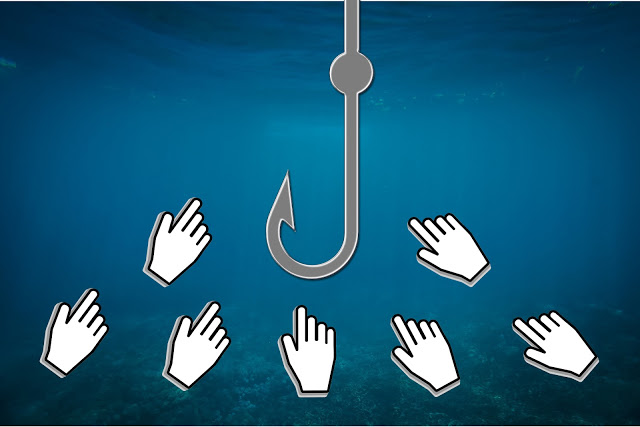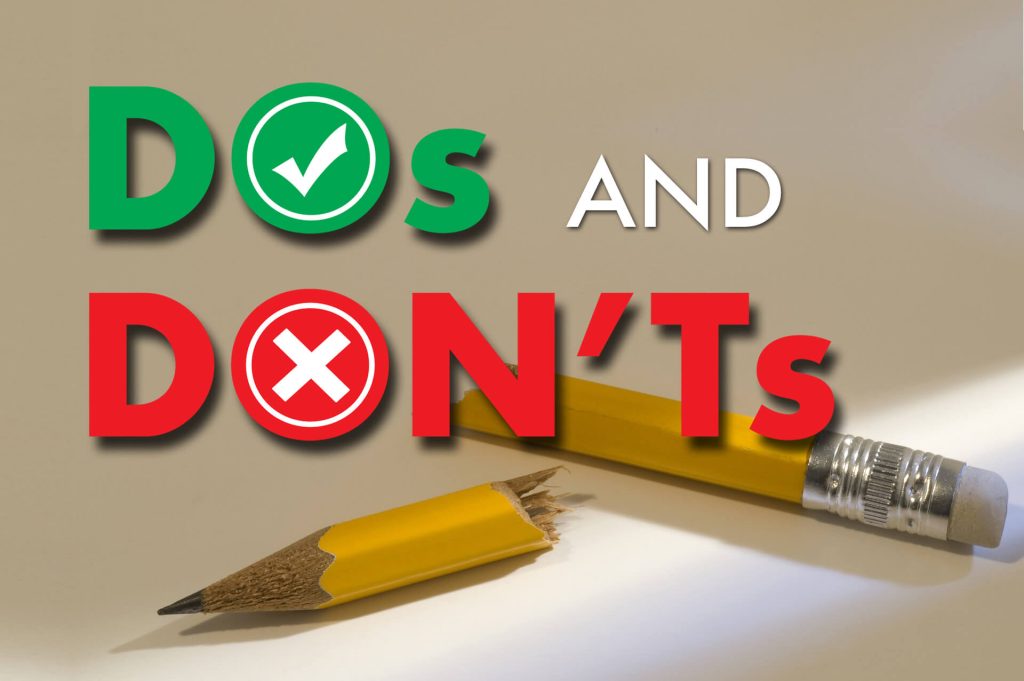UPDATED JUNE 19, 2024
Writing for your own business is hard
You might think you’re the best person to write about your business.
After all, it’s your business and no one knows it better than you do. Your knowledge is exceptional, you give the best advice to your customers and you’re committed to providing a quality product or service.
But the truth is, many businesses that write their own copy struggle to make it stick.
Not because they’re bad writers or because they don’t understand their customers.
But because they’re blinkered — a bit like this horse — and it means they’re not seeing the bigger picture.
Why is it so hard to write your own copy?
The main reason writing for your own business is hard is because you’re too close to it. And you can’t see the wood for all the trees.

When it’s your business, you’re emotionally invested in it, which makes it difficult to detach yourself. And though you know your customers well, it can be hard to apply that knowledge and find the right balance of what you know and what your prospect needs to know.
What you need is the objectivity to take a step back and see your business from different angles. To separate the business you see from the business your audience sees.
But that’s not an easy thing to do — and even some copywriters find it more difficult to write for themselves.
Why you should hire a professional copywriter
You need copy that puts your audience first and really makes a difference to your business. The best way to get that is to hire a professional copywriter to do it for you.
Professional copywriters are masters of creating audience-first copy that converts. And they have the objectivity to know what to write about, what to leave in and — most importantly — what to leave out.
But in these tough times, that’s not an option for every business.
19 Common copywriting mistakes
If hiring a copywriter is not an option for you right now, here are 19 common copywriting mistakes I see regularly on my travels around the web. Plus, an introduction to how a copywriter works, so you can learn from the pros.
The emphasis here is on website copy and content, because these are my area of expertise, but the mistakes could easily be applied to other forms of copywriting, too.
1. Working without a strategy
Having a strategy means you’re communicating with a purpose and actively targeting the right people.
Not having a strategy is like putting your message in a bottle, throwing it out to sea and hoping it will wash up on a beach full of your idea clients.
Never. Gonna. Happen.

How a copywriter creates a communication strategy
Your copywriter will create a strategy that outlines:
- Who you need to reach
- The goal for each piece of writing
- The SEO keywords you’re going to target
- The mix of copy and content you need
- The call to action (CTA) for each piece of writing.
2. Assuming what your prospects already know
It’s unwise to assume anything when you’re writing content, but especially when it comes to your prospects’ level of knowledge and understanding.
Because they may not know as much as you think they do — and you could be pitching your content at the wrong level for them.
How a copywriter finds the right level
Your copywriter will spend a long time researching your ideal prospects. This research will include the problems they’re having, the language they’re using and the questions they’re asking.
All of this helps to build a clear picture of the prospects you’re targeting and what they need from you.
Your copywriter can then write the copy that appeals to those prospects and gives them exactly what they need.
3. Promising and not delivering
Content that lures readers in by promising something, then doesn’t deliver it is tantamount to clickbait.

When you’re making a promise in your headline, you need to make sure your content fulfils that promise.
If you ask a question, you need to answer it fully. If you say you’re going to show your audience how to do something, show them the full process. If you’re promising 10 tips, make sure there are 10 tips.
How a copywriter delivers on their promises
Your copywriter will plan out their content before they start writing — so they know roughly what their heading will be — and they’ll keep that in mind all through the writing process.
If anything, a freelance copywriter who doesn’t work inside your business will be even more focused on making sure your content delivers for you — because that’s their job.
4. Focusing on what you want to say
When you’re writing copy it should be about what your audience wants to read. Because, if they’re going to read something voluntarily, there has to be something in it for them. In copywriting circles, we call this a ‘What’s In It For Me?’ (WIIFM).
Lots of companies get this wrong.
Some fill their blogs with company news, like projects they’re working on, new people they’ve hired and charity events they’ve hosted. This is often because they don’t understand what a blog is for, or what kind of content they should be posting on it.
Some are all ‘we, we, we’. They spend all their time talking about themselves — who they are, what they do, what they’re passionate about — and their prospects are barely even acknowledged.
And some fill their content with extraneous and irrelevant details that aren’t important to their audience.
How a copywriter finds the right focus
First, a copywriter will separate company news from blog content
Company news is typically something larger companies have. The audience for this is most likely to be investors, partners, affiliates, recruiters, job applicants and others with a vested interest in how the company operates. These articles can also be used for PR purposes.
If your company needs an outlet for this kind of news, it should be on a separate news page where those audiences can easily find it.
Blog content is for the benefit of your prospects and it should do things like:
- Answer their questions
- Give them information
- Educate them on relevant topics
- Show them how to do things
- Inspire them.
Second, a copywriter will write customer-focused copy and content
Customer-focused copy and content talks directly to your ideal customers. This makes them feel seen and understood.
If your copy is all about you and not about your audience, you can change that.
Read my guide on how to write more customer-focused copy >>
Third, a copywriter will use the ‘so what?’ test on their copywriting
If your prospect could read the copy and say “So what?”, they’re not going to care about it. This means you either need to amend the copy in a way that will make them care about it, or delete it.
For example:
❌ We’re passionate about making furniture.
So what?
✅ You’ll feel our passion for perfection on every surface and in every contour.
5. Using jargon and insider language
Every business has its own language: an insider vocabulary consisting of abbreviated terms, informal titles, acronyms and industry jargon.
This is fine when it’s used in the confines of your business, with colleagues who know and understand the lingo, but what if it seeps into your content?
If your audience finds your content full of unexplained jargon they don’t understand, they probably won’t bother to read it.

How a copywriter uses the right language
If your copywriter is a freelancer who’s never worked inside your business or industry, they probably won’t be aware of this language either.
If they find it, on your brief or during their research, they’ll check its authenticity before using it in your content. This means they won’t use made-up jargon and informal terms that don’t exist outside your business.
And if they use any official industry terms, they’ll add an explanation to keep your audience in the loop.
6. Not explaining things properly
When you know your subject as well as you do, it’s easy to skip over some of the important points and details from your content. But details that seem unimportant to you could be vital for your audience’s understanding.
And terms that are commonly used in your industry might not be commonly understood outside it.
How a copywriter will explain it
Through meticulous research, your copywriter will gauge your audience’s level of understanding and pitch your copy and content at the right level for them. This will include full and thorough explanations where necessary.
If your audience has limited understanding of the subject matter, it will help to hire a copywriter who’s also starting from zero. A copywriter who has limited knowledge will ask all the right questions and create more comprehensive copy and content.
7. Getting the feature/benefit balance wrong
Let’s start with the obvious question: what’s a feature and what’s a benefit?
The feature is that your product has a 30-watt motor.
So what? Is 30 watts good? Why should your prospects care about that?
The benefit is that your product’s powerful 30-watt motor helps you get the job done in half the time.
The benefit should be your focus because this is what gives your prospects context and a reason to buy. But mentioning the feature may also be important because it helps your prospects to compare similar products.
How a copywriter will get the balance right
Your copywriter will have been trained to talk about benefits, so they’ll always put those front and centre.
8. Not substantiating your claims
If you’re making claims, backing them up with evidence makes them credible.
❌ Unsubstantiated claim
Most people in the UK now have a smartphone.
✅ Substantiated claim
According to Deloitte, 90% of UK adults now have a smartphone and 95% use it daily.
In the substantiated claim, there should be a citation for the source of the information and a link to it.

How a copywriter will add credibility
Finding credible information online takes time. Your copywriter will typically spend about 70-80% of their time doing the research for our content and only 20-30% actually writing it. Good copywriters research meticulously to find original sources for the information they’re using and making sure those sources are current and relevant.
9. Copying content from other websites
Let’s say you’ve decided to write your own web copy, but you’re not sure what to say, so you decide to look at your competitors’ websites for some inspiration.
You find a part where your competitor has written exactly what you want to say, so you decide to copy that and paste it onto your own site.
But this is a bad idea.
First, because it’s plagiarism and that could get you into trouble.
Second, because Google will recognise it as duplicate content and might decide to penalise you for it.
And third, because it’s not helping to differentiate your business or brand from your competitor.
How a copywriter will make it original
Copywriters understand the importance of brand positioning and brand identity. On an internet that’s increasingly being populated with robotic AI content, this will be especially important for brands going forward.
Your copywriter will spend time studying the market and looking at your competitors. They’ll look at all the ways your brand is special and different to help you find your specific USPs.
Then they’ll create a distinctive brand voice that encapsulates your brand’s personality and values. All this will help cement your brand’s position in the marketplace and make you stand out from your competitors.
10. Not formatting your content properly
There’s nothing more daunting for an online reader than solid walls of text with no breaks or headings. Yet I see this all the time on websites and blogs.
On a screen, it makes the content laborious to read and difficult to digest.
How a copywriter will format your copy
Digital copywriters are masters of formatting on-screen content, because they understand this content is skimmed rather than read.
Your copywriter will write succinctly, using short paragraphs, giving your content plenty of breathing space, and using relevant headings to introduce each section.
To break up the content further, they might use different formatting options, like bullet points, indented paragraphs and call-outs. This gives your readers some variety and helps to highlight some of the important takeaways from your piece.
11. Going in for the sale too quickly
Some websites start selling immediately and will try to close the deal before their prospects have even understood what they do.
“Can we shake on that?”
“Jeez, give me a minute!”

The homepage will have a heading, a short introduction, then a hard CTA immediately after it. And it’s way too soon to start selling.
What do I mean by a hard CTA?
A hard CTA will ask your prospect to do something that involves them making a firm commitment. Like one of these, for example:
❌ Buy now
❌ Contact us
❌ Create an account
❌ Book a strategy session.
How a copywriter finds the right moment
Your copywriter will understand that if you’re going in for a sale with a hard CTA, you have to choose your moment. Too soon is like proposing marriage after the first date. Too late and you will have missed your chance.
Before you go in for the sale, you have to give your readers the information they need and give them a chance to get to know you.
Your copywriter will probably start with a soft CTA that doesn’t require any commitment at all, like:
✅ Tell me more
✅ Show me how
✅ View services.
When they’ve given the reader enough information, they might go for an intermediate CTA, like:
✅ View pricing
✅ Sign up for a free trial
✅ Get an online quote in seconds
✅ Join our mailing list.
And only when they’re sure the time is right will they go in for the sale.
12. Writing copy that’s riddled with clichés
Clichés are overused phrases, which have become eye-rollingly dull and tired.
Think phrases like:
- All that glitters is not gold
- Every cloud has a silver lining
- Head over heels in love
- We’ll cross that bridge when we come to it.
Not only are clichés dull, they’re specific to language and culture, which isn’t very inclusive in our modern and diverse societies.

How a copywriter avoids the clichés
Copywriters avoid clichés like the plague — a little joke there!
But seriously, the last thing a copywriter will want to be is stale. So clichés are a big no-no for us and we’ll find more imaginative and original ways to communicate your brand messages.
13. Poor spelling and grammar
Copy that’s riddled with spelling mistakes and grammatical errors will make your business look unprofessional and give the impression you don’t care too much about your audience.
How a copywriter avoids mistakes
Your copywriter makes their living writing, so they, more than anyone, appreciate the importance of making sure the spelling and grammar are correct. And they’ll take time over editing and proofreading their work to make sure it’s always up to standard.
14. Including things that should be a given
Things like good quality and good customer service should come as standard. These definitely aren’t selling points, but I’ve seen many websites describe them that way.
How a copywriter avoids stating the obvious
Your copywriter should use the ‘I should hope so’ test.
If your prospect could read a piece of your copy and think ‘I should hope so’, that means it should be a given and we either need to be more specific or remove it.
For example:
❌ We give great customer service.
I should hope so!
✅ Get your money back if you’re not completely satisfied.
15. Waffling and not getting to the point
You know those annoying people who can turn a five-minute trip to the shop into a 20-minute story?
They waffle on and on — and by the time they get to the end, they’ve either forgotten what their point was or you find out they didn’t really have one.
Mmmm… waffles!
What was I saying?

Some companies waffle way too much on their websites. And they go all round the houses before they actually get to the point.
But on your website, your visitors aren’t a captive audience, so if they don’t want to read all that waffle, they can just silently disappear.
How a copywriter avoids waffle
Your copywriter will know how to grab and hold your audience’s attention. They’ll know exactly what they need to say and the points they need to make. And they’ll write your copy clearly and succinctly, making every word and sentence count, so nothing is wasted.
Some copywriters will make their point first, then go on to back it up. This means your audience gets the good stuff upfront and can decide how much of the back-up information they need to read.
16. Being clever at the expense of being clear
Using clever ideas and word play in your copy can be fun. But sometimes it falls flat, because it’s so contrived, the clarity of the message has been lost.
When you’re writing copy, clarity is everything. If your visitors don’t feel clear about what you’re offering, they’re never going to buy it.
How a copywriter ensures clarity
Copywriters love word play and creative ideas. But they also understand it’s a fine balance and will never use those things if it will compromise the clarity of your message.
17. Using passive voice rather than active voice
Passive voice is most commonly used in formal communications. When businesses use it in their messaging, it’s because they think it sounds more ‘professional’. But it really just sounds corporate, standoffish and boring.
Active voice is mainly used in informal communications, like content and fiction. But it’s clearer than passive voice and sounds more human, more engaged and more involved.
How a copywriter chooses which voice to use
Your copywriter will strive to make your communications as clear and human as possible, because they know this is the best way to engage and connect with your audience. Using active voice is often the best way to do that.
Read my article: The difference between active and passive voice >>
18. Not including a CTA or CTV
A CTA is a Call To Action. A CTV is a Call To Value. And you should have at least one or the other on every page of your website and on every blog article. If you don’t, you’re missing the point!
A CTA prompts some kind of action from your reader, like:
✅ Add to cart
✅ Sign up
✅ Read more.
A CTV goes one step further and also promotes the value you’re offering, like:
✅ Get your free account and start creating today
✅ Buy now for instant peace of mind
✅ Sign up and start saving with an exclusive 50% discount.
But some websites and blog articles lead visitors to a dead-end with nowhere else to go.
How a copywriter includes a CTA or CTV
Your copywriter will understand the value of the CTA or CTV. And they know everything they write should be leading up to that point, so they’ll craft your copy accordingly.
19. Not checking your copy before you hit ‘publish’
Some businesses have copy and content on their website that was clearly created in a rush and published without being checked. Among the things I’ve seen are:
- Sentences and paragraphs left unfinished
- Duplicated paragraphs
- Links that don’t go anywhere
- Lorem ipsum placeholder text
- Notes the writers had left for themselves.
The list goes on. But all these things could have been avoided if the copy had been checked over properly.
How a copywriter quality checks their copy
Your copywriter will usually write up their first draft then leave it — usually overnight. This gives them the distance they need to come back to it and look at it objectively.
When they see it with fresh eyes, they can tidy it up and resolve any issues they find before sending it to you for approval.
You might also like…



Need a copywriter?
If this post has made you realise the value a copywriter can bring to your project, maybe you’ve changed your mind about writing your own copy. And maybe I can help.
I’m Jenny Lucas, a freelance website copywriter and content writer with more than 14 years’ expertise in writing SEO copy and content that converts.
For more information and to see samples of my work:
Read more about working with me >>
Get in touch >>

